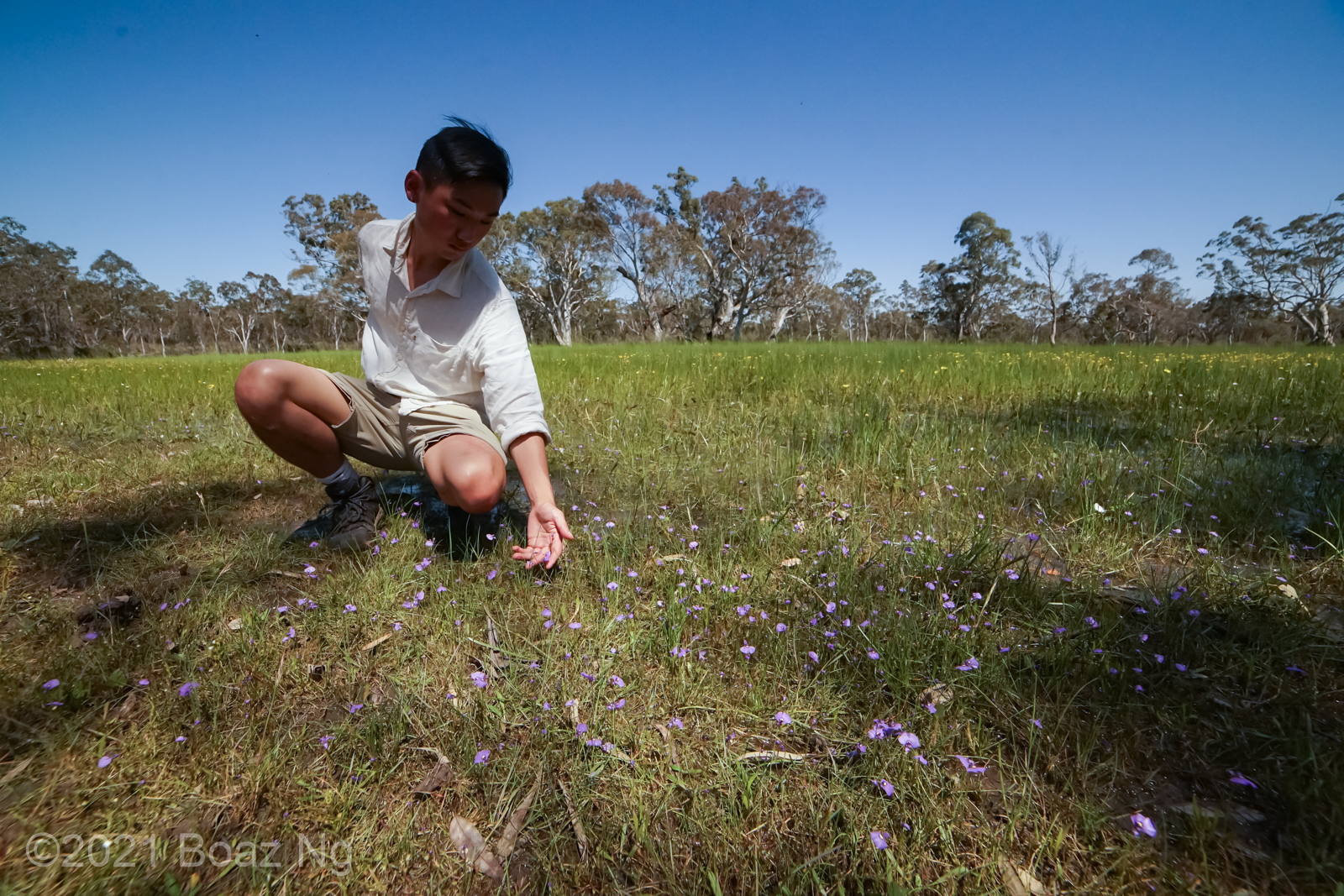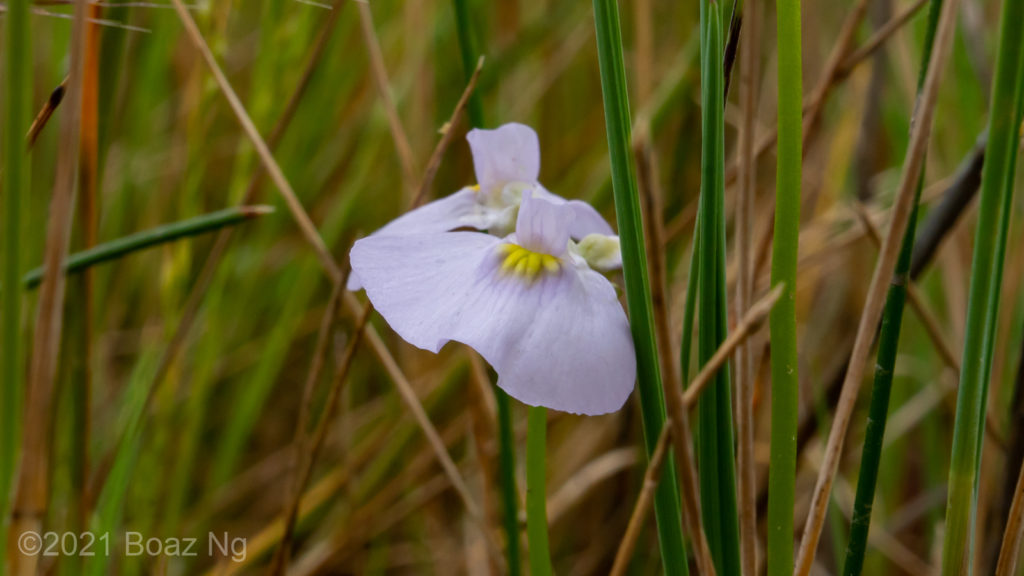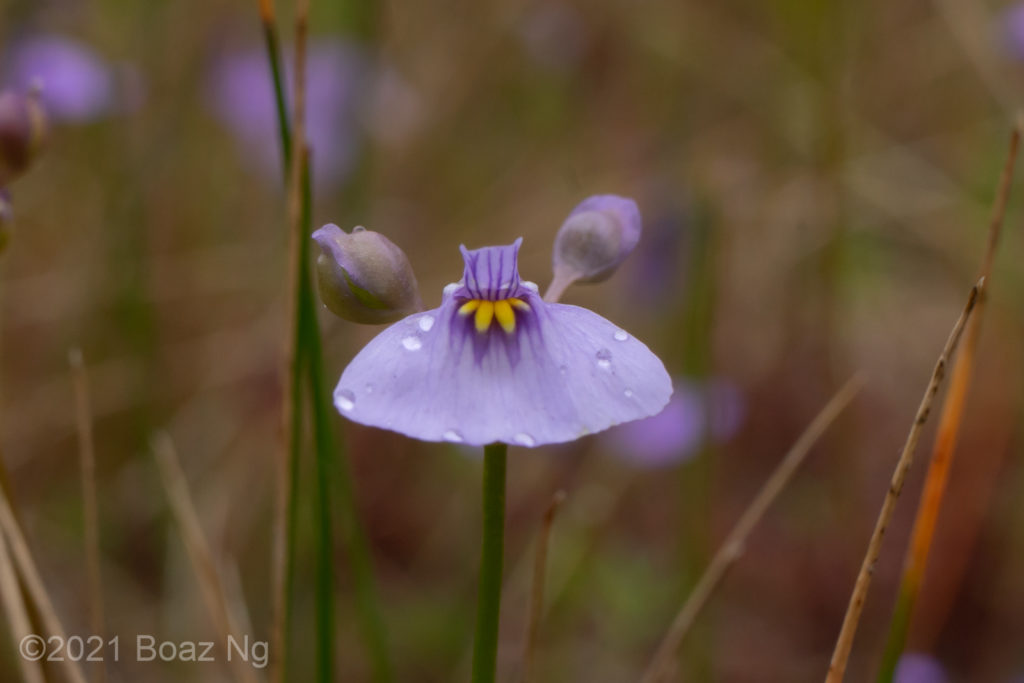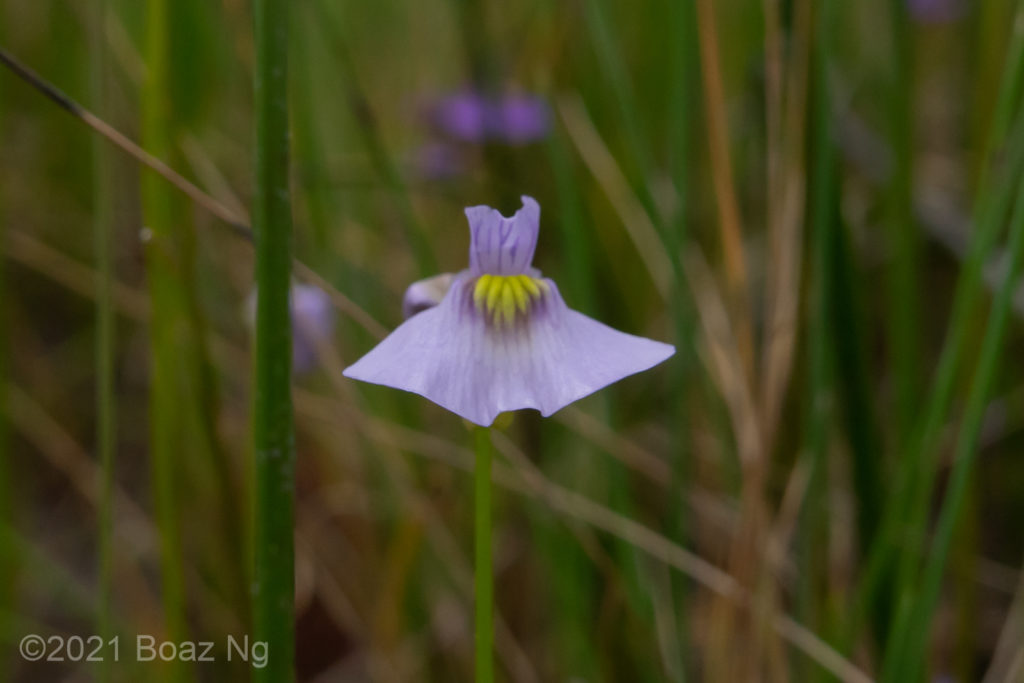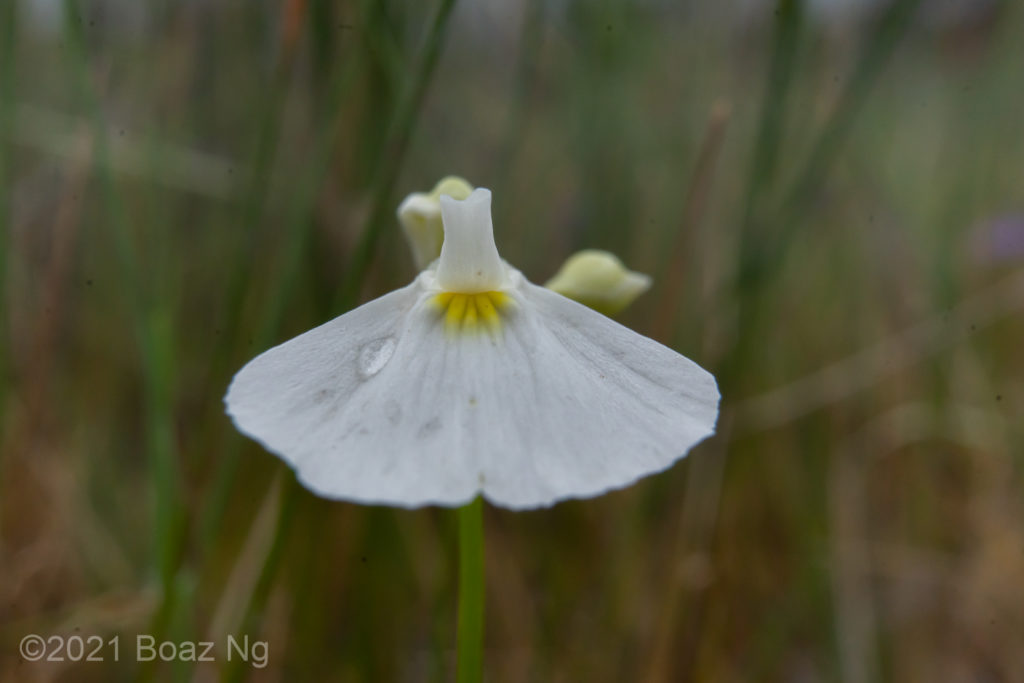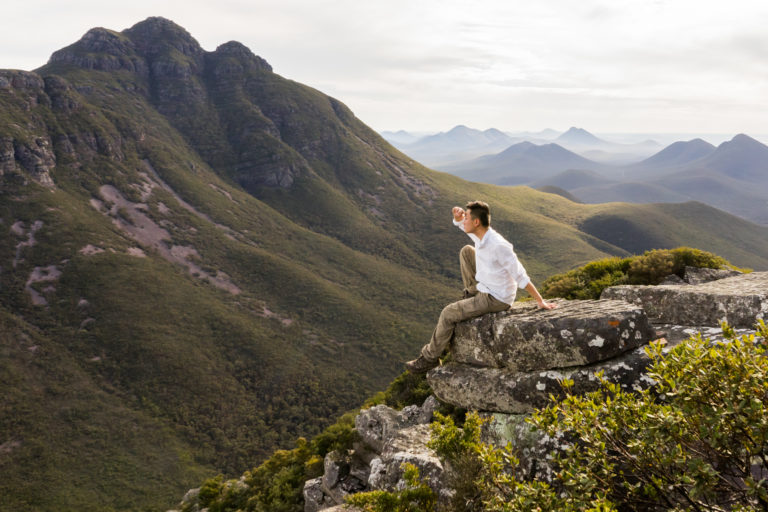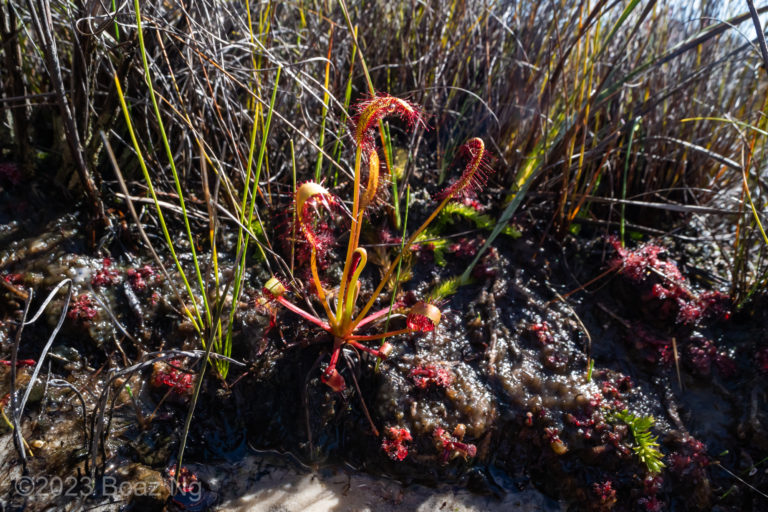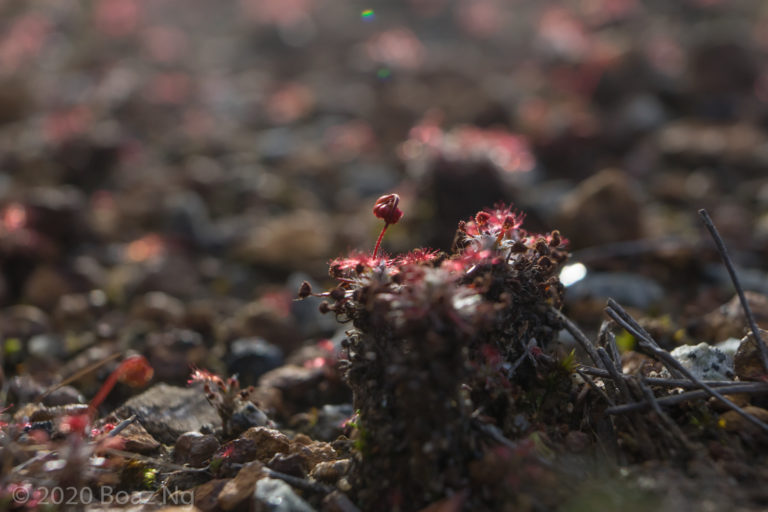In the last months of 2020, I ventured into the Victorian countryside to document the carnivorous plants that grow there. I found several newly described taxa and learned so much about the remarkable niches of these plants.
After 112 days of lockdown, the ring of steel around Melbourne fell as the city emerged triumphant against the coronavirus. So on November 9th, the day the restrictions were eased, I loaded up my car to spend an entire week in Western Victoria, where I knew rare carnivorous plants were abloom.
With the radio blaring, I vented my built-up claustrophobia and anxiety out on the road; the wide open countryside was so refreshing after months of being confined to my house and workplace. After a few hours, I pulled up by the side of the road as I arrived at my first site.
Flanked on one side by paddocks, the other by the distant profile of the Grampians Range, this location did not seem like it would be productive as it was literally a drying ditch by a road. After a quick survey, I noticed an area where tall stems of Thelymitra orchids signalled the presence of things more interesting.
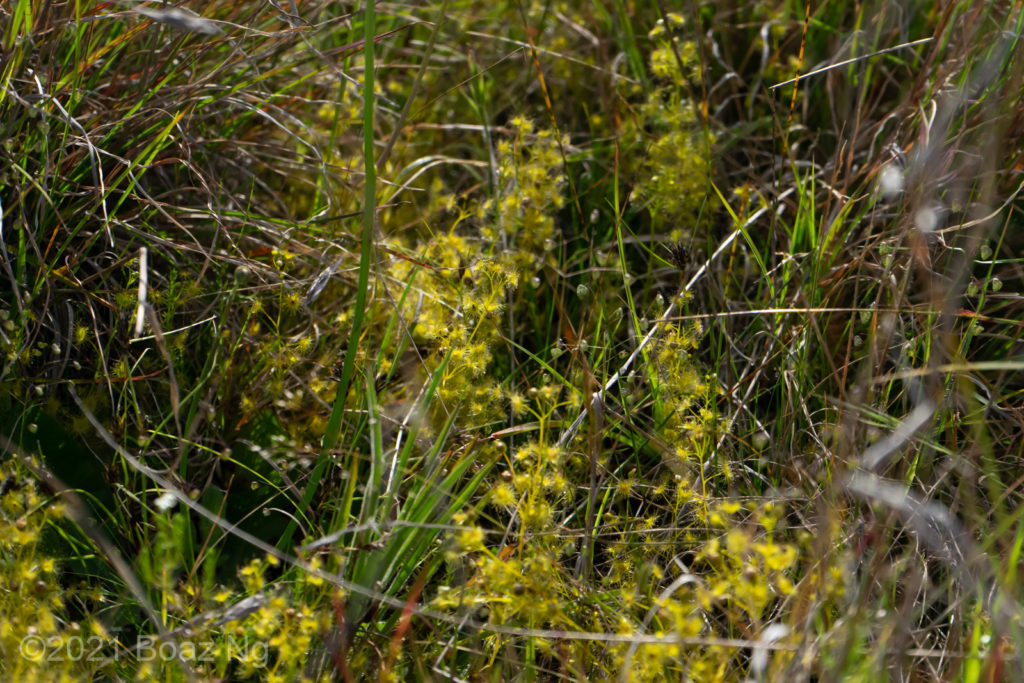
Nestled amongst the grasses I found tangled stems of Drosera hookeri, an erect tuberous species identifiable through its many branches, short stature and small flowers. I had seen this species extensively in Melbourne and was impressed by how adaptable it was to habitats affected human disturbance.
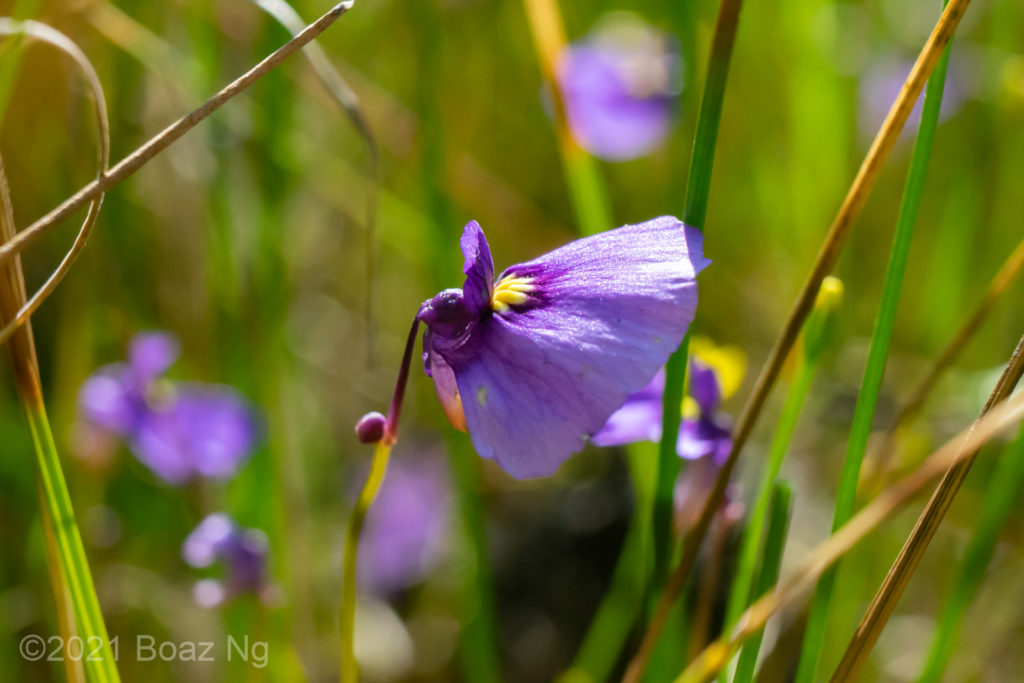
However, I had come to this site in search of a more enigmatic species that blooms only for a short period of time and only during the wettest years. Initially I thought that I had missed the species because the soil was almost parched, but eventually I came along a wetter section and found some struggling Utricularia beaugleholei subsp. beaugleholei hanging on in the heat.
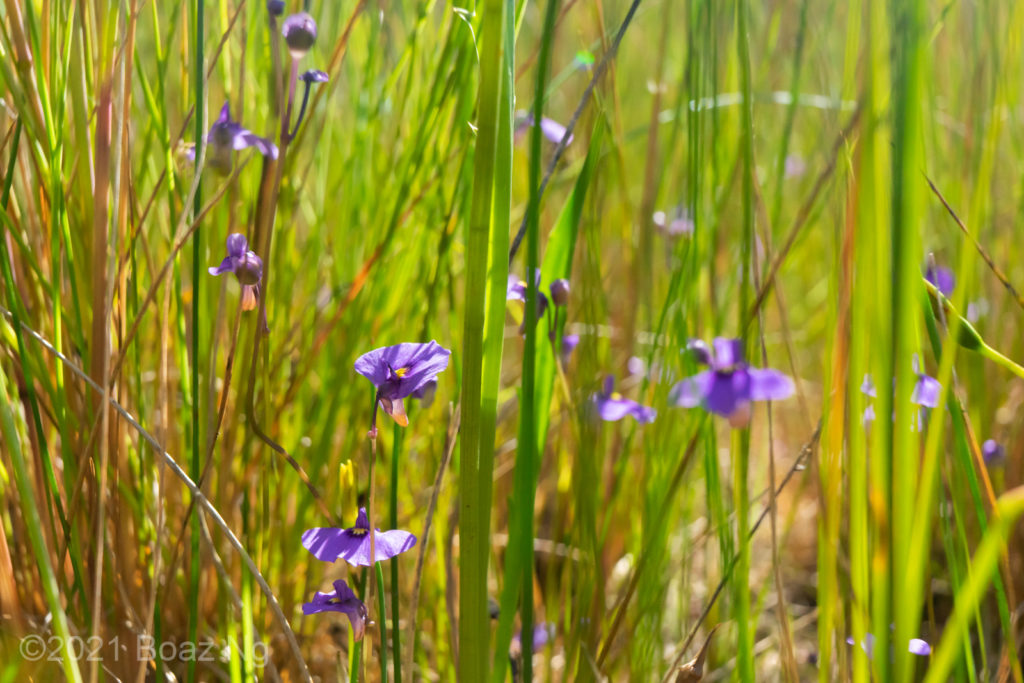
This species is perhaps the most beautiful of the Victorian bladderworts and is characterised by its widely flaring lower corolla lip. The palate features numerous small yellow ridges and the upper corolla lip has dark purple veins. Utricularia beaugleholei, although widespread across the central and eastern parts of the state, is rather uncommonly seen as the blooming period only lasts around week or two in the shallower ditches where it grows. With no substantial rain forecast, I knew that this site would likely dry out completely in the coming days.
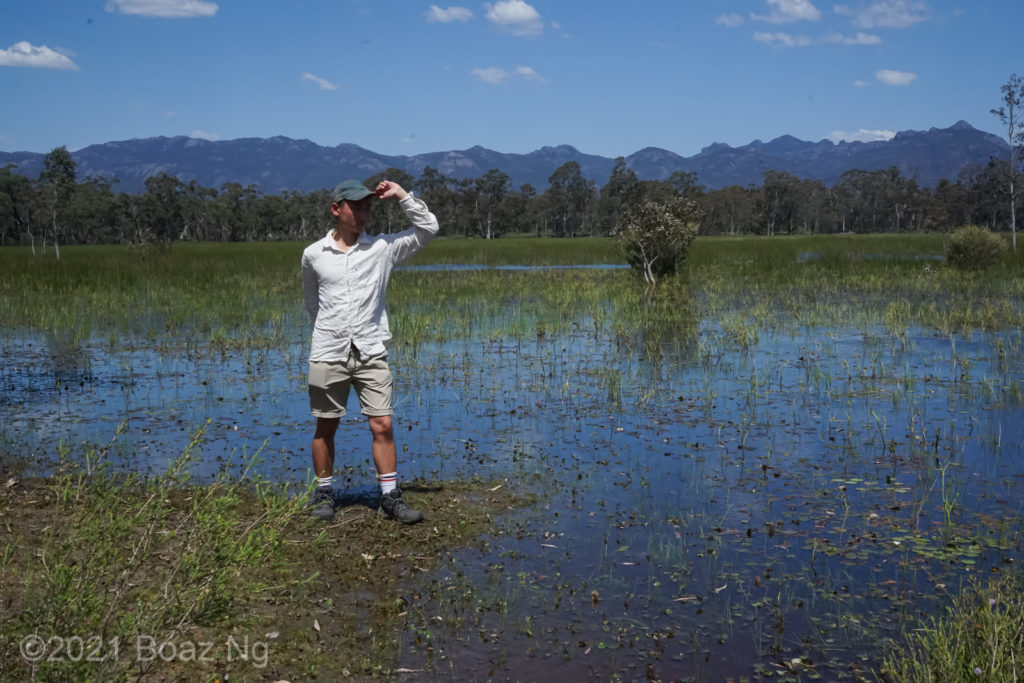
After photographing the best specimens, I continued driving in search for more pristine habitats of the species. By midday, I made it to the the Grampians, an isolated range of dramatic sandstone mountains that rise abruptly out of the surrounding flats. The plains at the western edge of the ranges are particularly productive, being watered by the orographic lift of the prevailing westerly winds. However, there was still a sense of trepidation, especially given that the area had been gripped in drought for the past three years.
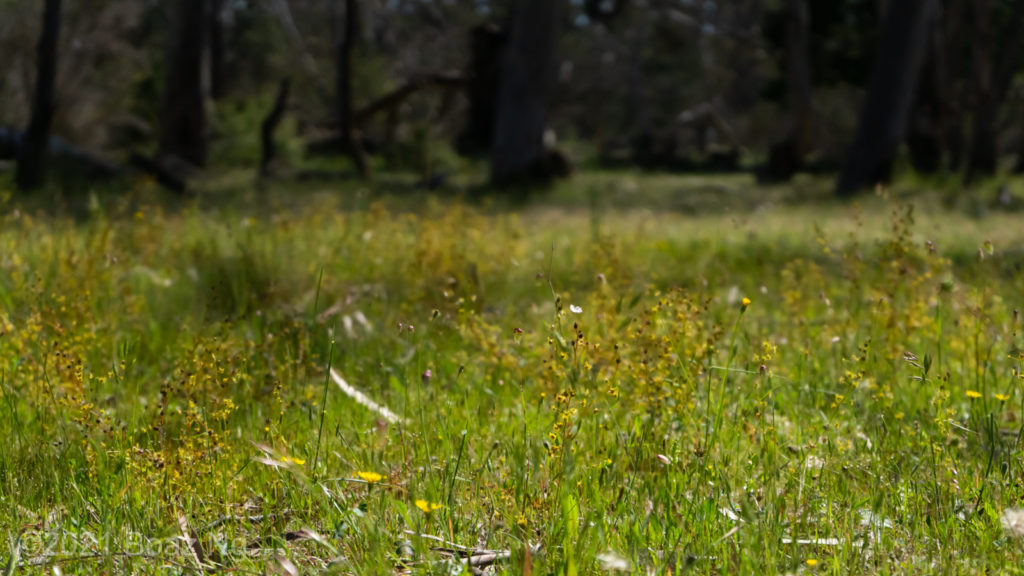
As I entered the bushland, my anxieties instantly dissolved as I found myself surrounded by intensely lush bushland. Immediately, my eyes were drawn to the clay road bank where I recognised the glow of thousands of Drosera gunniana growing together. This close relative of D. hookeri is typically characterised by its olive colouration and tall stature and occupies seepages and plains admist bushland. The hot weather that day meant that the flowers were fully open and I enjoyed their presence as I wandered to a roadside wetland.
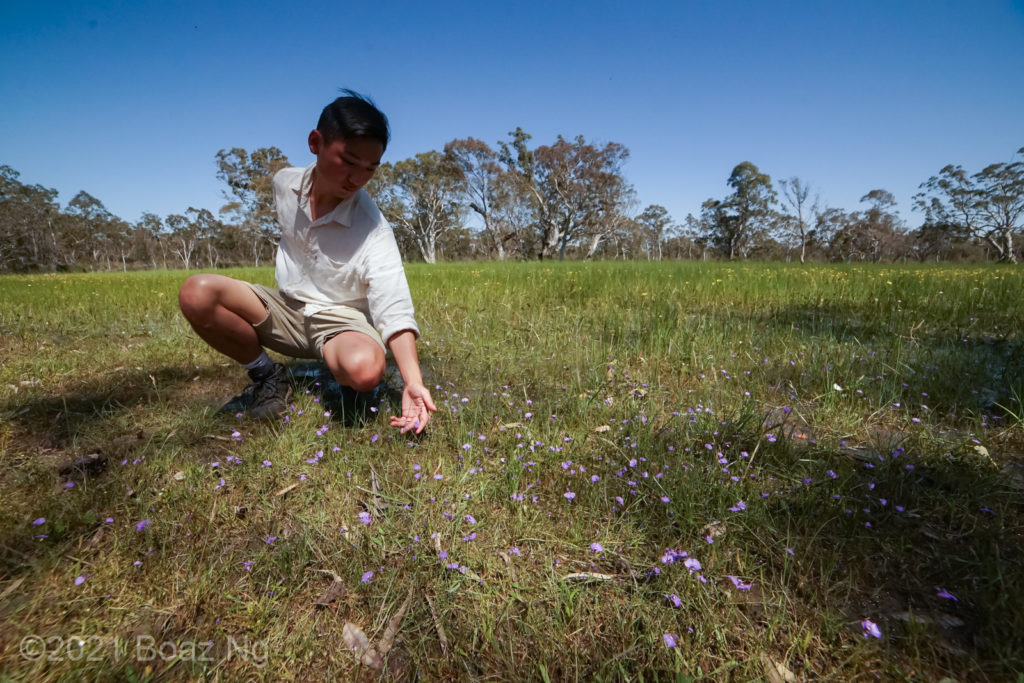
When I finally broke through the scrub, I was presented with a wide open clearing amongst the swamp gums that beautifully framed the luxuriously green pools. To my relief, the wet winter had filled the wetland to the brim and the whole area was alive with the croak of frogs, buzz of dragonflies and constant drone of cicadas. I traced the margin of the swamp until I noticed a patch of purple!
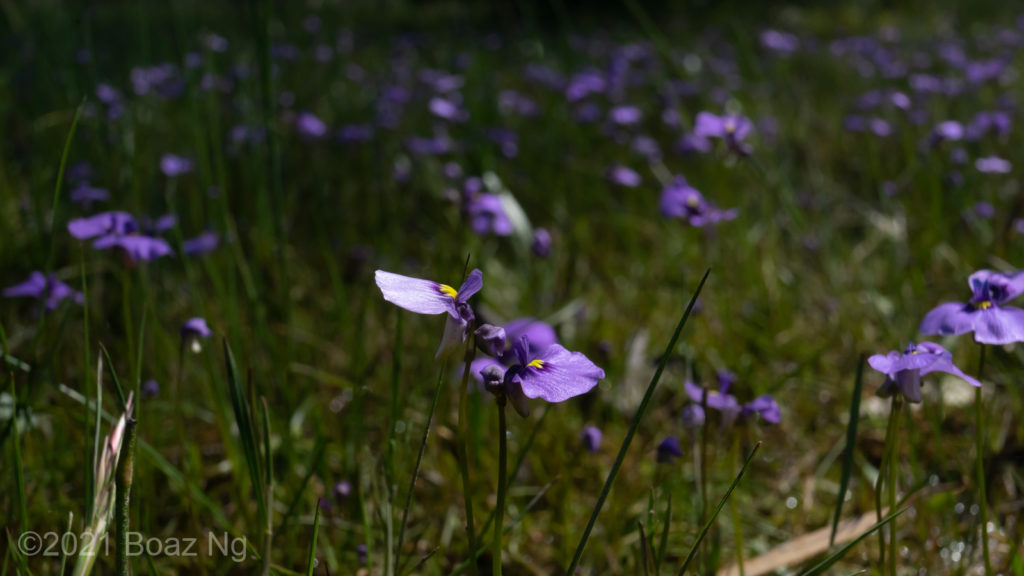
Excitedly I rushed over and found Utricularia beaugleholei in the receding edges of the pool. Compared to the stunted plants in the roadside ditch I had seen earlier, this population was so much healthier, with fully formed blooms coloured a very vibrant shade of purple. Slightly higher up, above the floodline, grew dense patches of Drosera hookeri. I found interesting the niche differentiation between it and D. gunniana, with D. hookeri clearly having a preference for the wetter areas. This really cemented that the two taxa were different species, a separation that is still somewhat controversial.
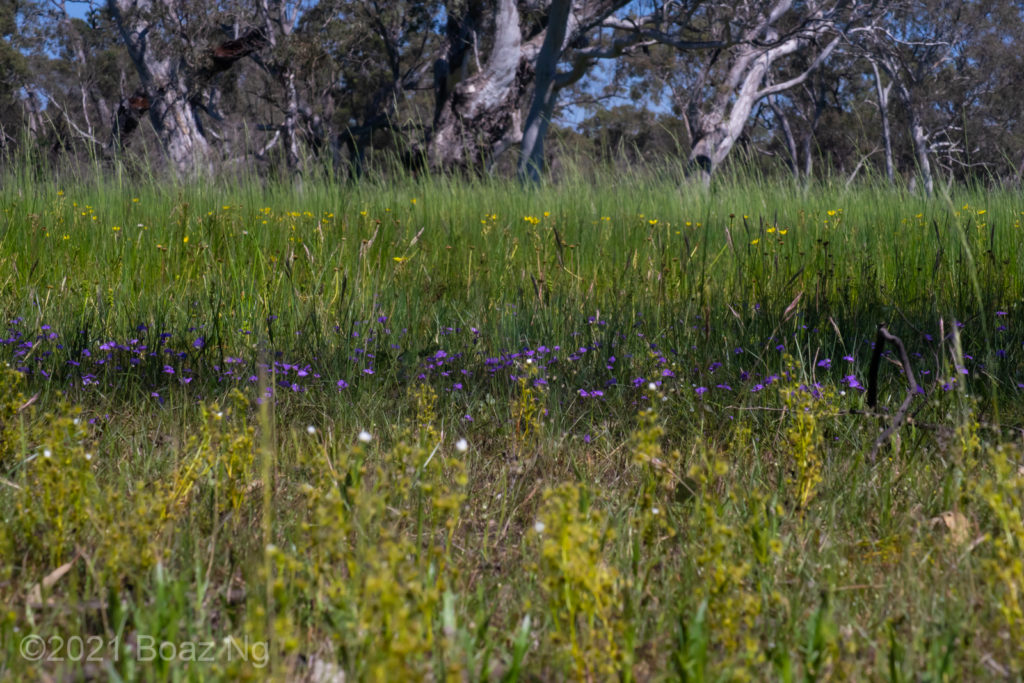
After enjoying the site, I continued forwards to head to another system of wetlands. I drove for a few kilometers along a remote unsealed road before being abruptly stopped by a massive fallen tree! I decided to walk the remaining distance by foot and it was good that I did for I would not have noticed an interesting red variety of Drosera gunniana in the area. This is particularly striking as in almost all other regions, the species is invariably olive green.
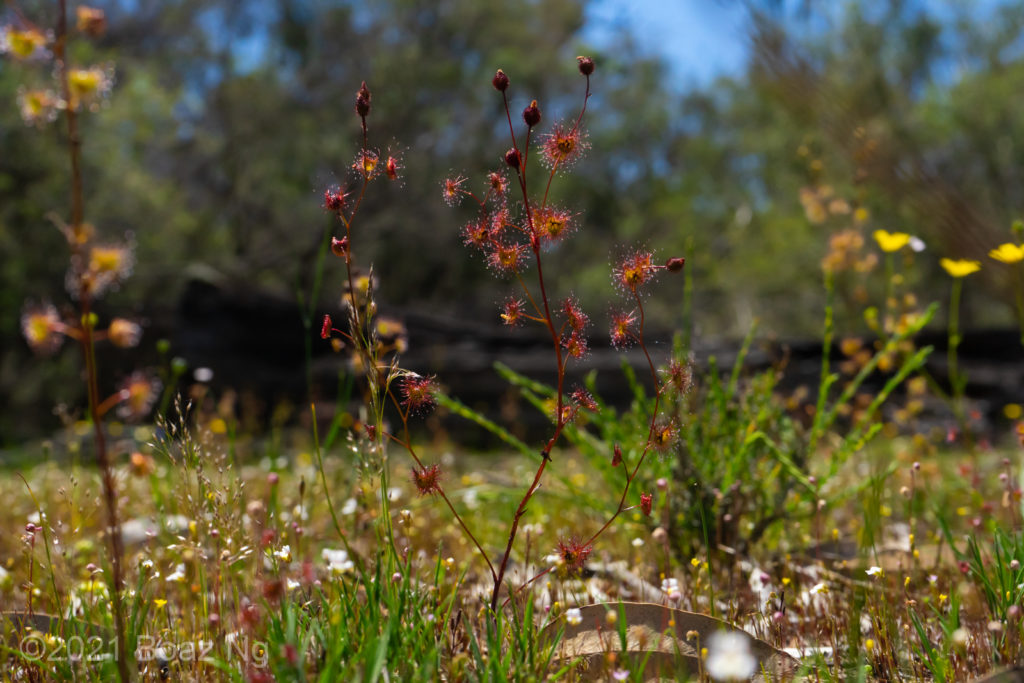
The strength of the midday Australian sun on the exposed road was beginning to test my endurance. I found some common carnivorous species – D. pygmaea, D. glanduligera and U. tenella – in the seepages aside the walking track but unfortunately didn’t spend too much time photographing them as I was beginning to feel a bit dehydrated. Forging forward, I eventually returned to the cool shade of swamp gums to much relief.
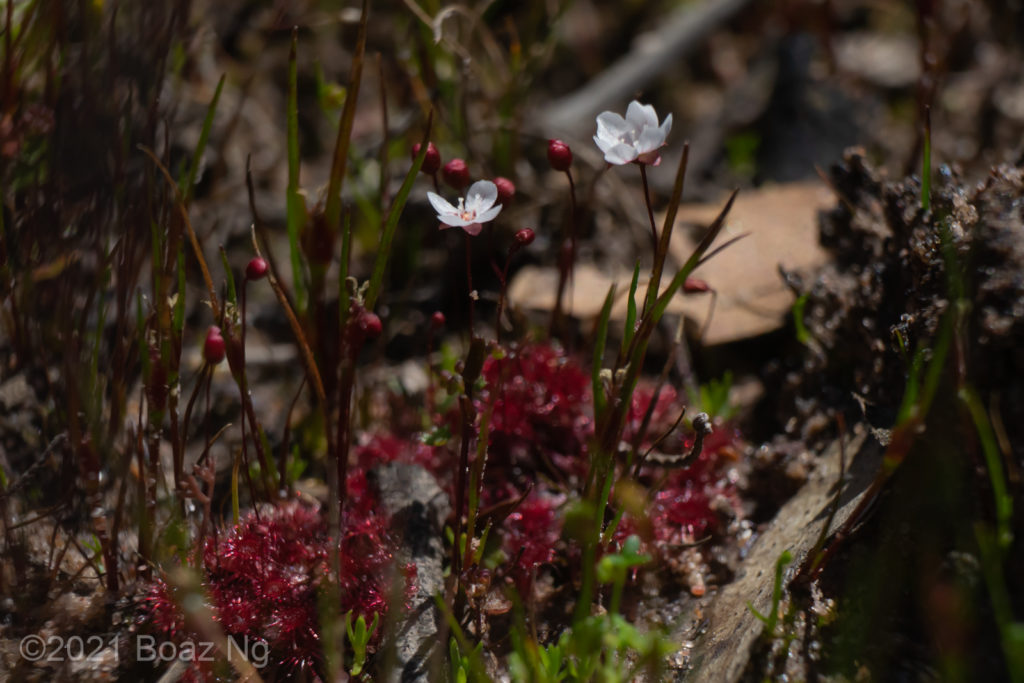
Drosera pygmaea 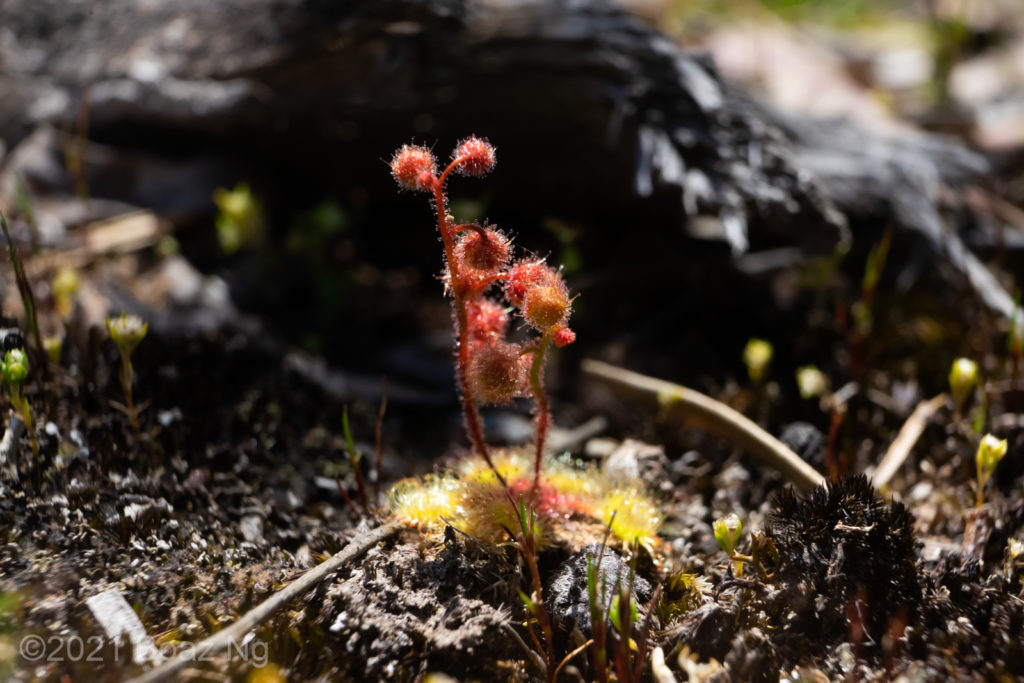
Drosera glanduligera 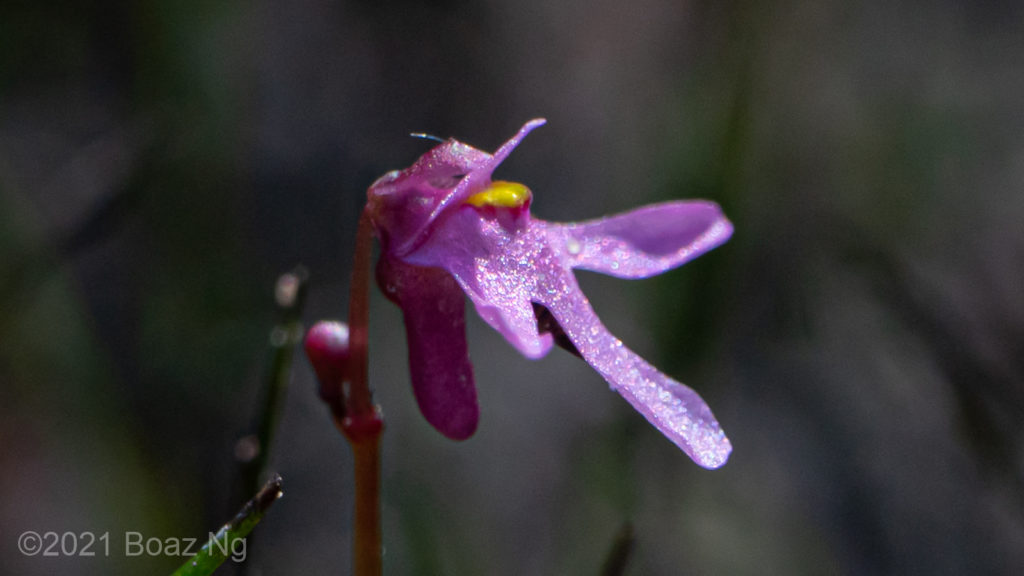
Utricularia tenella
As I approached the site, I began to notice that the soil beneath my feet was getting wetter and before long, I found that I had stumbled upon a field of Utricularia beaugleholei! Suddenly, my tiredness evaporated and with a rejuvenated sense of awe, I noticed more and more purple popping up against the lush green surroundings. The area had two shallow swamps, both full of the blooms- even the woodland that stretched between the pools had dots of purple every now and then. Amongst the shadows, the bright lime green foliage of Drosera hookeri seemed to almost glow with a glorious aura. The unobstructed bushland, bursting in every direction with so much life and colour, was one of the most beautiful places I have ever been.
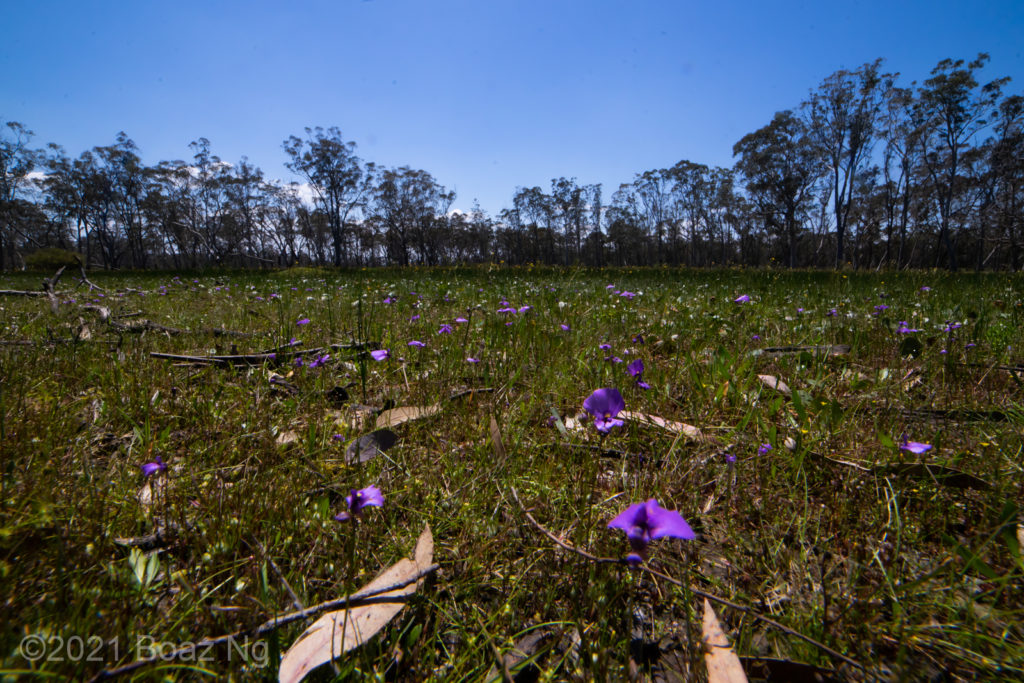
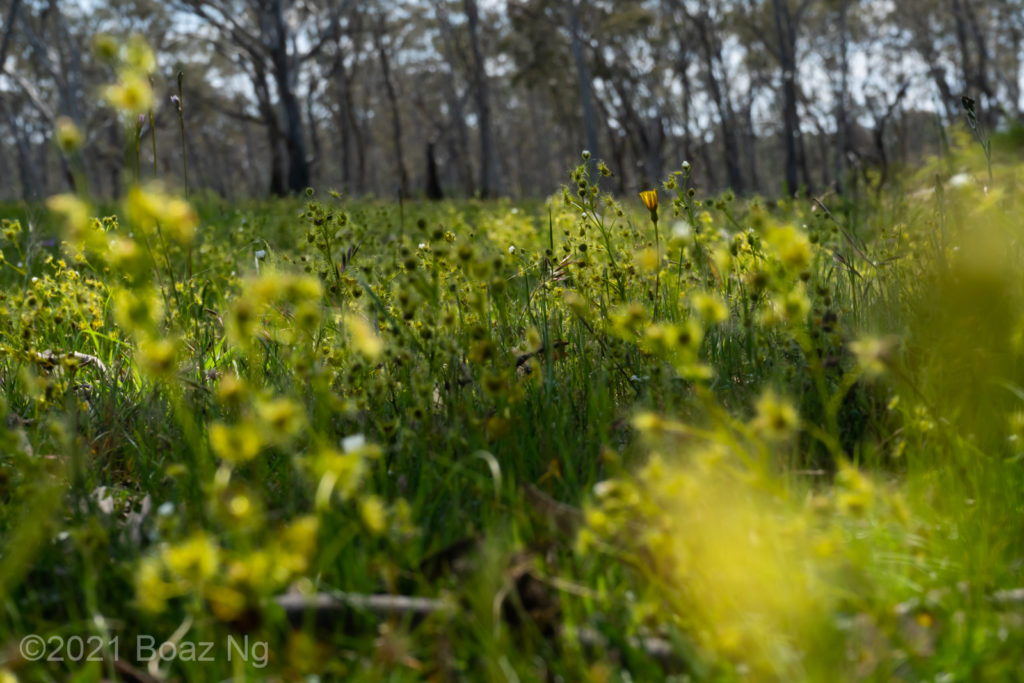
The now overbearing humidity and dehydration eventually caught up with me and I trudged back to the car to rest. Originally, my plan was to camp in the area but the stuffy air would have certainly made it an uncomfortable experience. On the radio, I heard that there was the possibility of severe storms and flash flooding so I decided to play it safe and spend the night in the comfort of a youth hostel at Halls Gap.
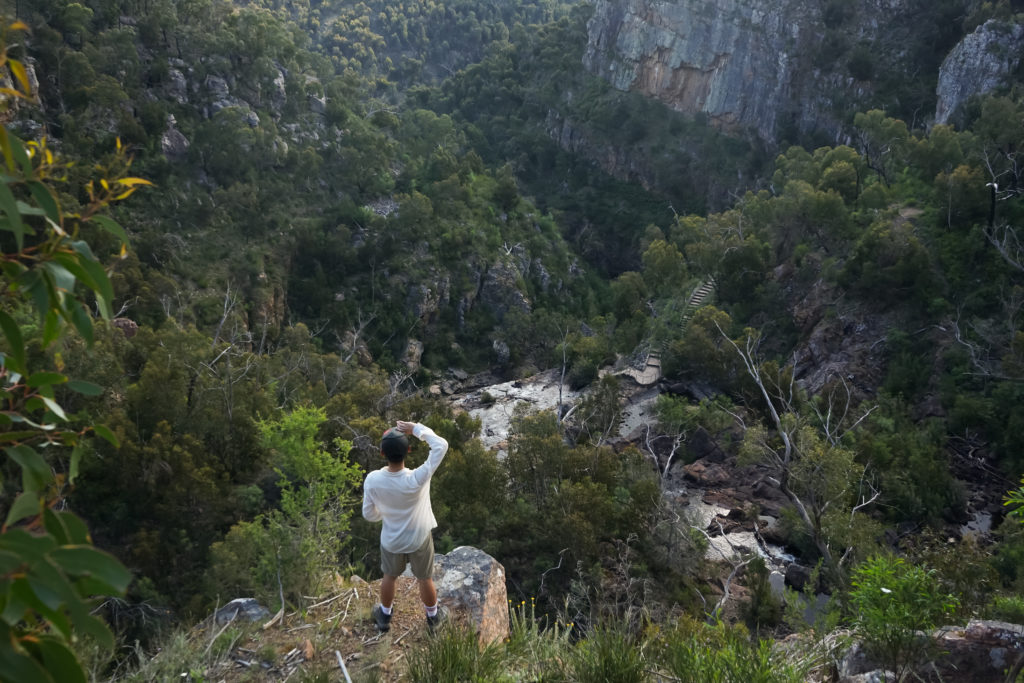
I followed the winding tourist road into the heart of the Grampians, which took me up and over the impressive mountain ranges for which the national park is known. As I drove, I kept my eye on the rocky platforms at the side of the road for I knew a species of bladderwort grew up on the ridges of the area. As I turned a corner, a flash of purple caught my eye and I immediately parked at the side of the road.
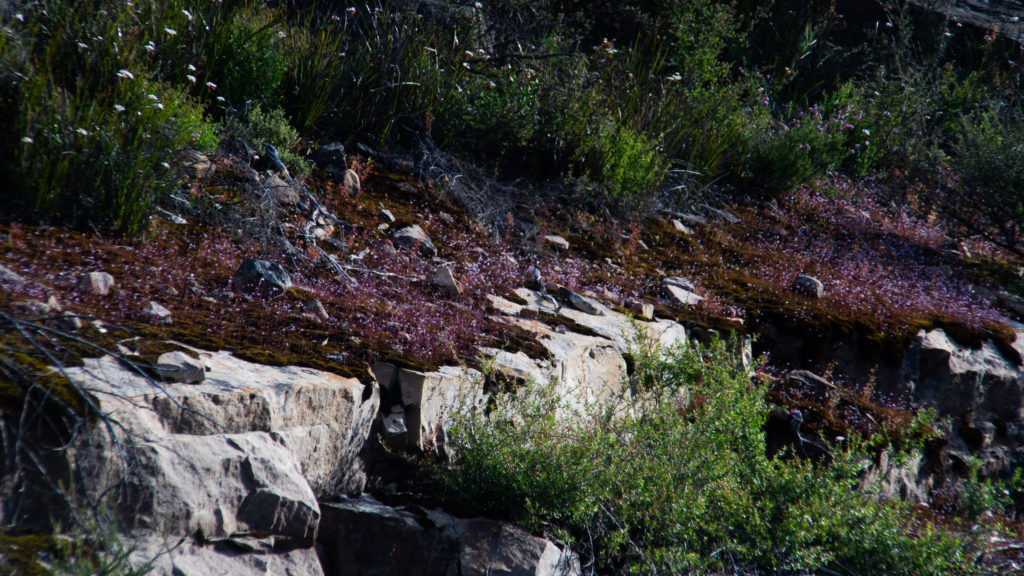
Before my eyes were thousands of Utricularia grampiana in full glory, blooming en mass and colouring the entire rock platform purple. By themselves, the blooms are diminutive and somewhat unremarkable, but it lacks in size, they make up for with numbers. Interspersed with the bladderworts were red stems of Drosera auriculata, green stems of Drosera gunniana and even rosettes of Drosera glanduligera! All of this diversity occurred in a layer of moss just a few centimeters deep and I was especially impressed about how the plants grew so successfully in such a perilous niche.
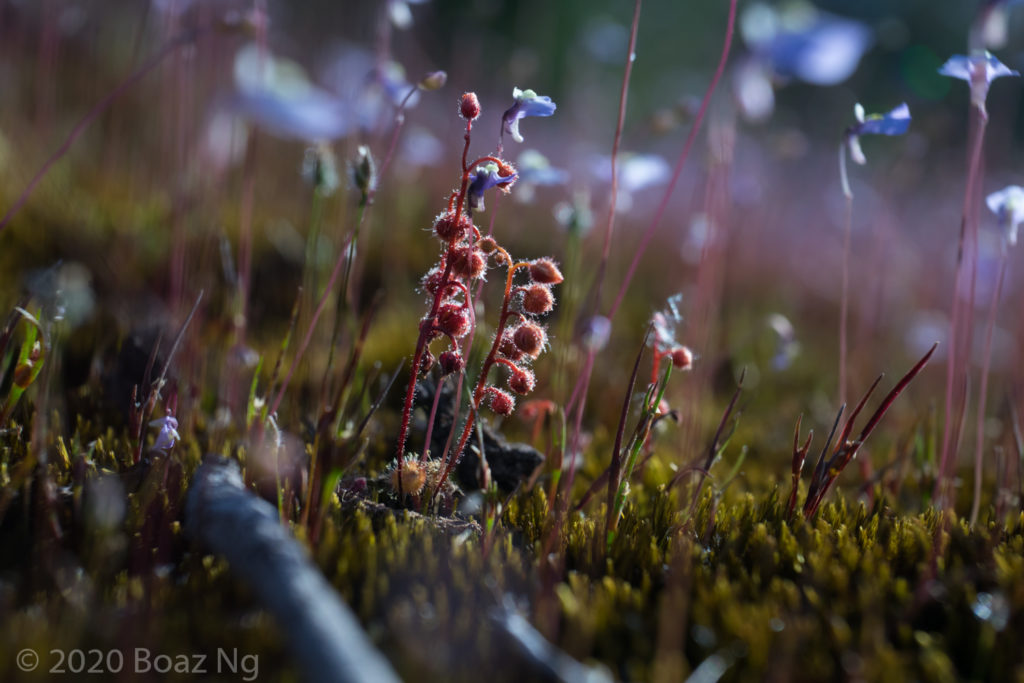
Drosera glanduligera 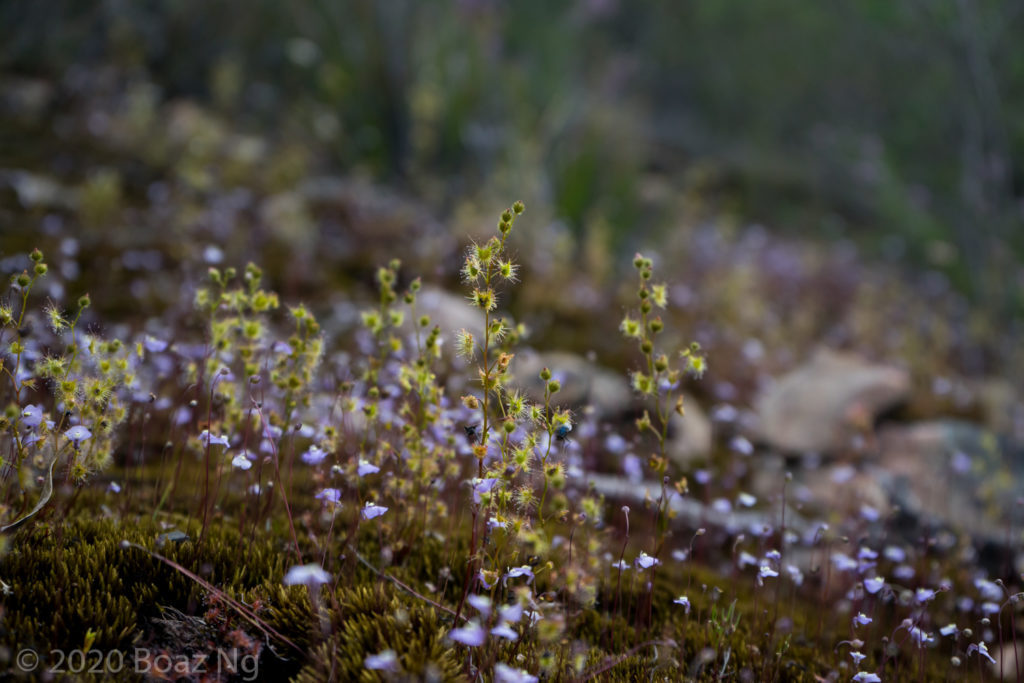
Drosera gunniana 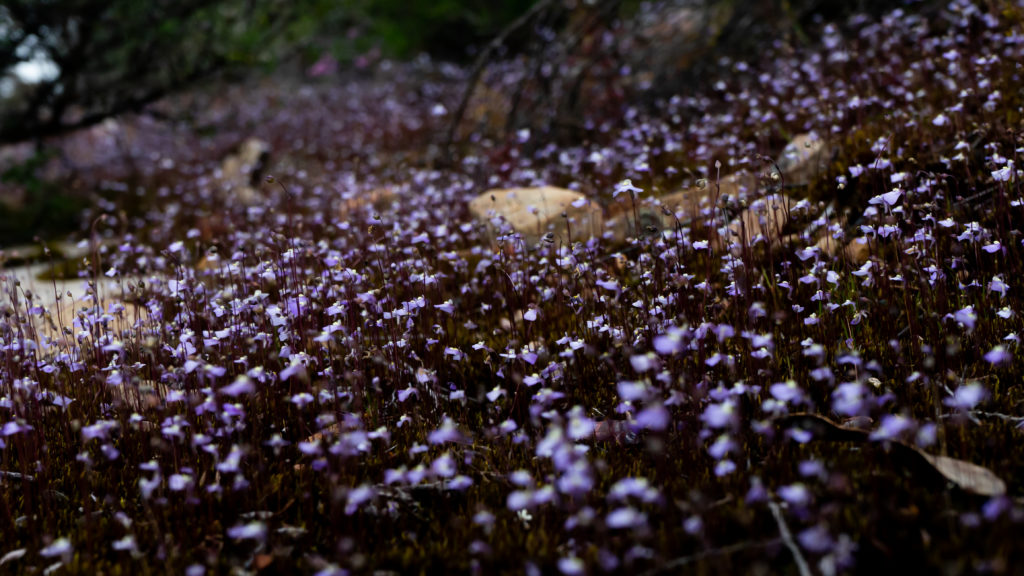
Utricularia grampiana
The temperature and moisture had now reached breaking point and with the rumble of thunder developing in the distance, I knew that I had get going. I arrived at the hostel as the skies opened and I had a good nights rest after some 300 km of exploration.
I awoke to the sound torrential rain. With the winding roads treacherous and the risk of flooding real, I took the morning easy and hung around indoors until the cold front passed. By afternoon, the skies had sufficiently cleared and I headed out westward to the Mt Arapiles state park. This area wasn’t really a carnivorous plant site but it was already pretty late in the day and I didn’t really want to get my socks wet so I went there to enjoy the view and spend the night.
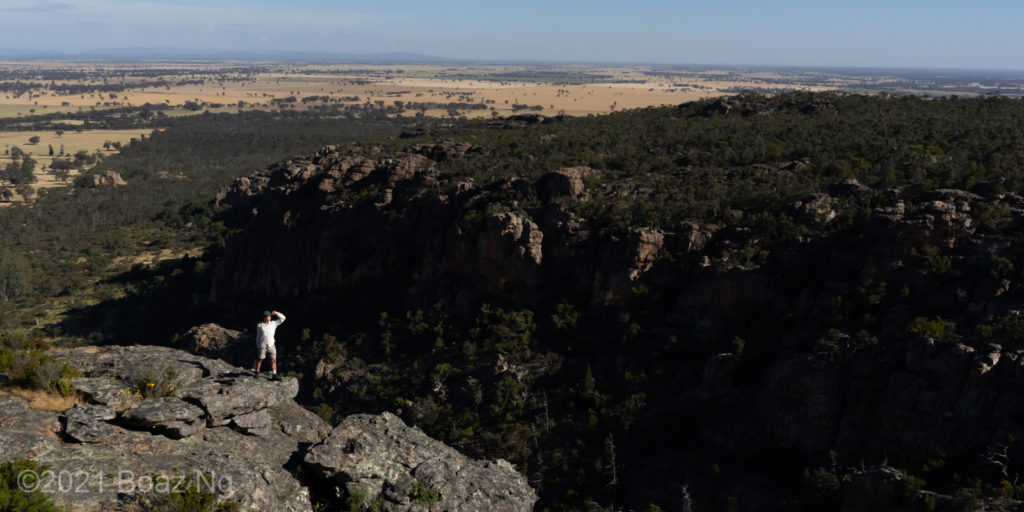
As I arrived, I was surprised to see no trace of the rain storm in the morning, and it was actually a perfectly sunny and beautiful afternoon. I hiked up the mountain at considerable pace – not because I wanted to challenge myself but because I was chased by a swarm of mosquitos the entire way up the gully. Luckily the summit plateau was exposed and windy, so not too many mosquitoes were present. While I didn’t see any carnivorous plants, I did find some interesting blooms of Oligochaetochilus.
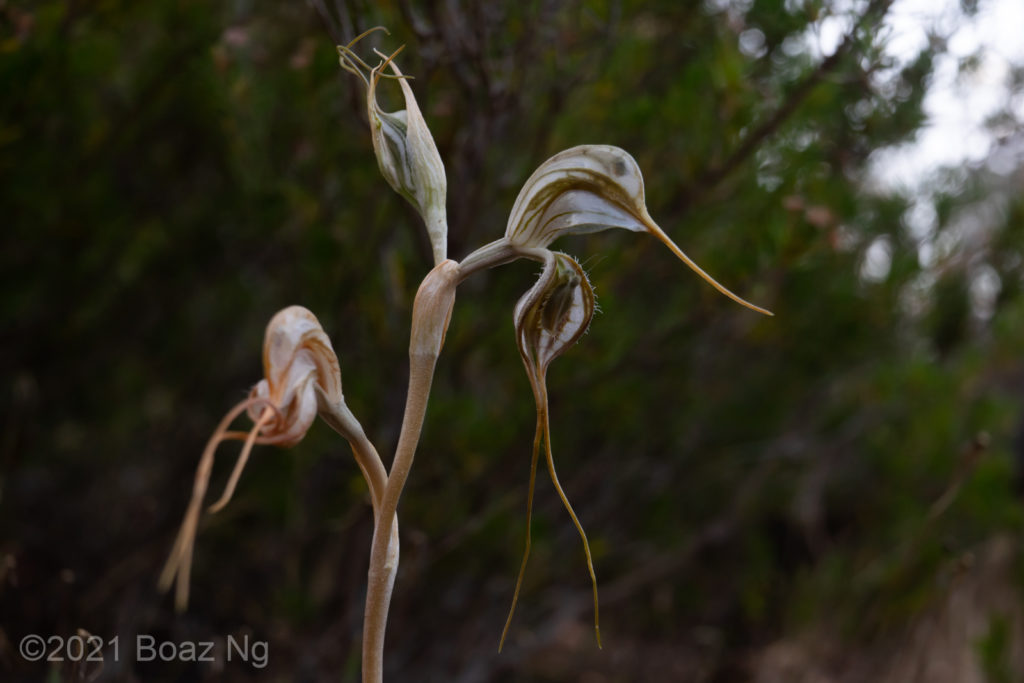
After spending the night in my car, I took off in the early morning to search for more Utricularia beaugleholei sites in the plains of the Wimmera. Several nature reserves lie south of Mt Arapiles, and satellite imagery shows that there are countless wetlands within them. I was excited to see if any Utricularia could be found there.
When I pulled up at the first stop, I hurriedly rushed out towards the swamp but was dismayed to see that there was no water in it! I surmised that as the substrate was extremely sandy and that it was too far away from the Grampians to benefit from orographic lift, that the area probably dried up much quicker than the wetlands I visited a few days prior. The soil in the region was already cracked and parched, although I saw evidence of D. gunniana in the form of blackened stems. Not to be discouraged, I forged onward to the next location.
I was met with dry swamps site after site and with the clouds blackening, I was beginning to lose hope. I decided that this particular reserve was probably a lost cause and took a gamble to visit another park not too far away. On the satellite, these pools appeared a slightly different shade so perhaps that meant that they were deeper? As I arrived, I was encouraged by the sight of rushes, signalling the presence of water.
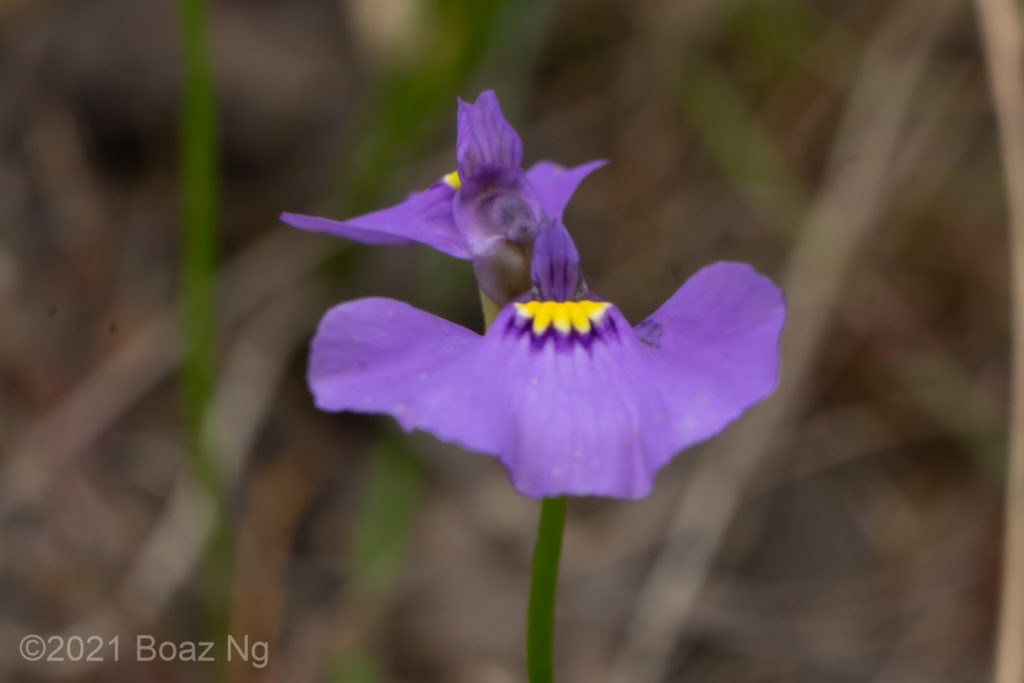
Stepping onto the cracked perimeter of the depression, I wasn’t particularly optimistic but as I approached the wet patch, I noticed a few specks of purple. I had found another population of Utricularia beaugleholei! Although this population was probably one or two days from drying completely, and the blooms were very scrappy, I was nonetheless excited to confirm the presence of the elusive species.
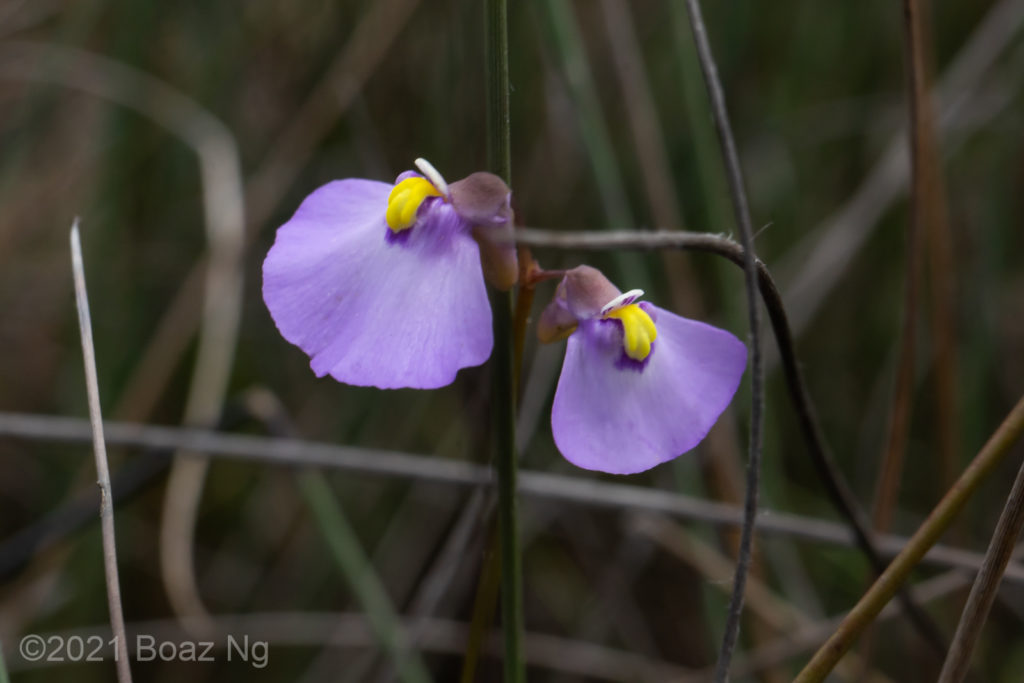
At another larger swamp, I found Utricularia barkeri around the perimeter. This species seems to prefer seepages and can often be found where groundwater is released from the surrounding bushland. In the middle of the lake, I saw some more U. beaugleholei but it was nowhere as impressive as the displays of the western Grampians, partly due to the off-putting muddy substrate.
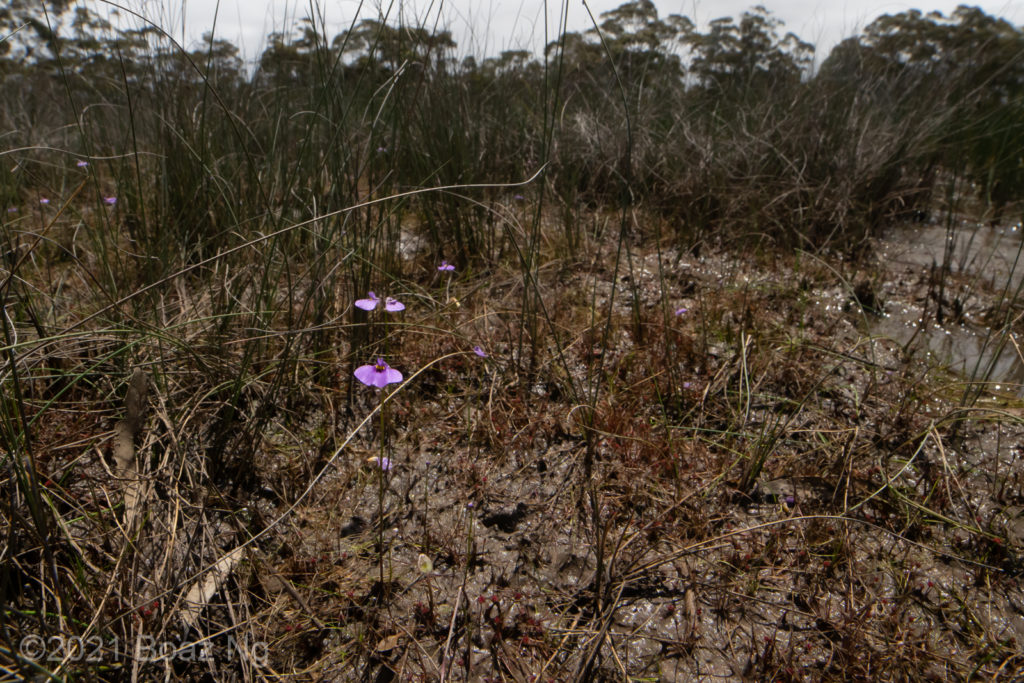
There was one final site I wanted to visit, but it was a good 40 minute walk away. With the mediocre luck I was having, I really wasn’t sure whether it would be worth the effort or not. Thinking that I would only be here once, I trudged towards the site.
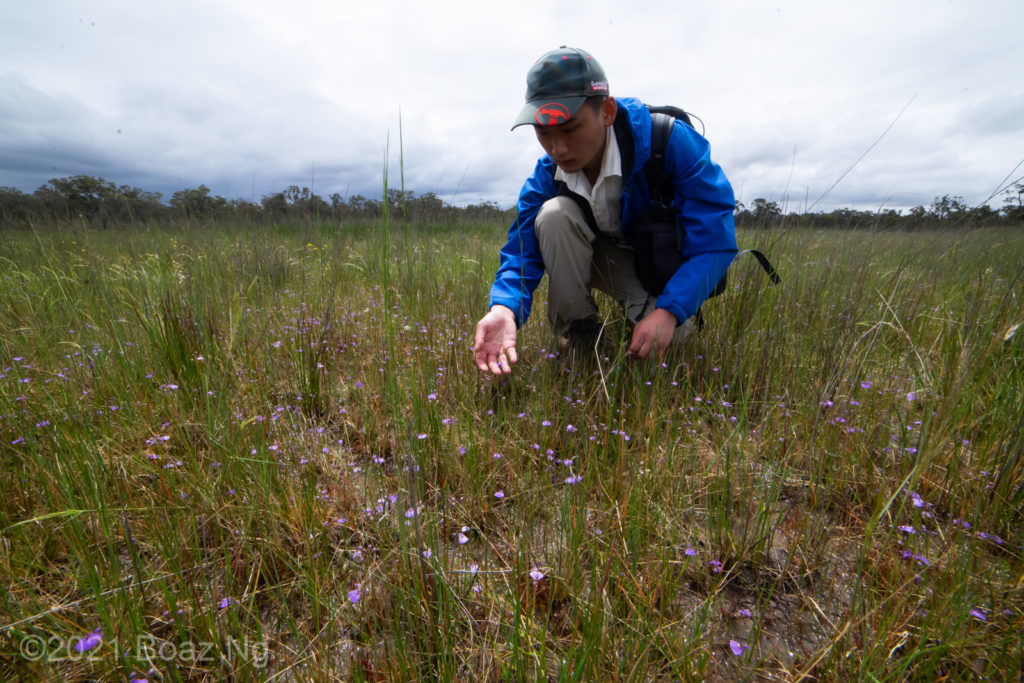
As I arrived, the bush opened up to a gigantic wetland that was still very lush. As I ventured onto the soil, still waterlogged but dry enough to walk on, I suddenly found myself surrounded by thousands of Utricularia beaugleholei! In every direction I saw patches of purple colouring the field into the distance, the vibrant tone of the blooms exaggerated against the organic soil and dark sky. I had arrived at the right place and at the right time, the very narrow period where the water level had dropped enough to induce en mass blooming and before it dried up significantly.
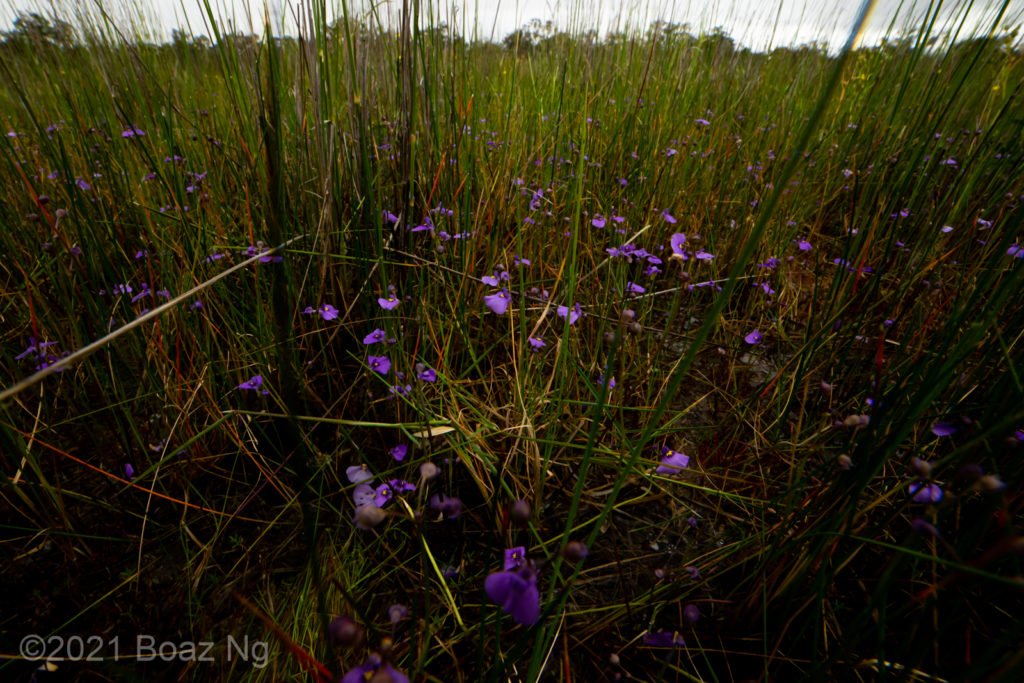
Mixed amongst the usual shades of purple were individuals with interesting colour variations. Every now and then, small clusters of plants with white corollae and yellow palates occurred, an effect which is likely due to genetic mutations. Another variety was coloured mauve, with the total absence of the dark purple pigment in the palate or the veins. In annual bladderworts, which flower en mass and are mainly noticed through their blooms, such mutations are commonly seen and stand out rather readily. However, complicating the matter are flowers with multiple shades of purple, or even mostly white blooms with the occasional purple dot, which suggests some sort of phenotypic plasticity rather than a classical genetic explanation in the variations.
Even with the slight drizzle, I spent a good hour or two photographing the plants in the wetland and it was certainly the highlight of my time in the Wimmera plains. After such a long and varied day, I was exhausted and made my way to the Rocklands Reservoir and camped the night. I knew I had to get some good rest as tomorrow, I was going to tackle my first real hike in ages …

